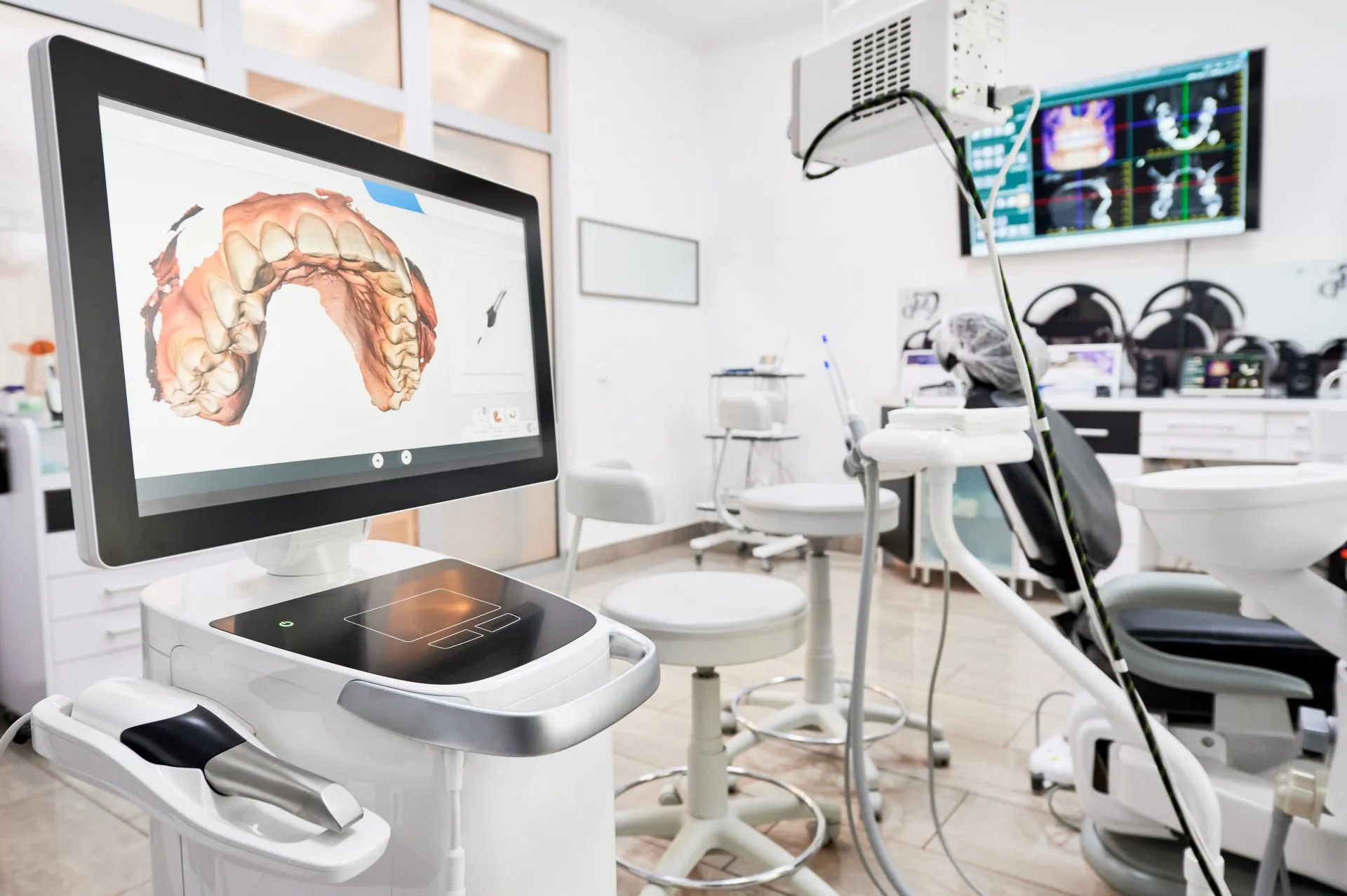Modern dentistry is continually evolving, leveraging cutting-edge technology to enhance patient outcomes, accuracy, comfort, and overall efficiency. From diagnostics to treatment, digital advancements such as 3D CT scans, intraoral scanners, CAD/CAM milling machines, and 3D printers have transformed dental practices, paving the way for streamlined workflows and improved patient experiences.
3D CT Scans: Precision in Diagnostics
Three-dimensional computed tomography (3D CT) scans offer unparalleled accuracy in dental imaging. Unlike traditional two-dimensional X-rays, 3D CT scans capture comprehensive and detailed images of teeth, jawbones, nerves, and soft tissues. This advanced imaging technique helps dentists accurately diagnose complex conditions, plan precise treatments such as dental implant placements, wisdom tooth extractions, and orthodontic interventions, and significantly reduce potential risks and complications during surgical procedures.
With 3D CT technology, dental professionals can visualize anatomical structures from multiple angles, enabling them to anticipate challenges and provide safer, more predictable outcomes.
3D Intraoral Scanners: Comfort Meets Accuracy
Gone are the days of uncomfortable traditional dental impressions. 3D intraoral scanners deliver fast, precise, and comfortable digital impressions of teeth and gums. These scanners use high-resolution cameras to capture thousands of images per second, which software then compiles into a highly accurate digital 3D model.
Patients benefit significantly from this technology, experiencing shorter appointments, enhanced comfort, and a clear visualization of their dental issues. Dentists, in turn, gain superior accuracy in restorations such as crowns, bridges, and orthodontic aligners, improving treatment precision and patient satisfaction.
CAD/CAM Milling Machines: Streamlined Restorations
Computer-Aided Design and Computer-Aided Manufacturing (CAD/CAM) milling machines represent a remarkable innovation in restorative dentistry. After capturing a digital impression with an intraoral scanner, dentists use CAD software to design restorations like crowns, bridges, veneers, or inlays/onlays.
CAD/CAM milling machines then precisely carve these restorations from high-quality dental ceramics or composite materials, often within a single visit. This digital approach significantly reduces turnaround time, improves restoration fit and aesthetics, and enhances overall patient satisfaction by eliminating multiple appointments and temporary restorations.
3D Printers: Innovation in Dental Solutions
3D printing technology has significantly impacted dentistry by offering highly precise and customized dental solutions. Dental 3D printers create accurate models, surgical guides, orthodontic aligners, temporary crowns, and even dentures. This technology enables dental practitioners to achieve fast, reliable, and patient-specific results, ensuring consistency and high-quality care.
With 3D printing, dentists can better predict clinical outcomes, enhance patient communication by showcasing tangible treatment plans, and efficiently produce customized dental appliances, significantly improving patient convenience and practice efficiency.
Digital Workflow: Integrating Technology for Enhanced Outcomes
The digital workflow in dentistry seamlessly integrates various advanced technologies, from diagnostics to treatment execution. By combining 3D CT scans, intraoral scanners, CAD/CAM milling, and 3D printing, dental practices can now operate with unmatched precision and efficiency.
A fully digital workflow ensures faster diagnostics, streamlined treatments, fewer procedural errors, and enhanced patient communication. It fosters collaboration between dental specialists, lab technicians, and patients, ensuring all stakeholders are fully informed throughout treatment.
Ultimately, adopting digital dentistry positions dental practices at the forefront of patient care, emphasizing precision, comfort, and efficiency. Patients benefit from reduced treatment times, improved results, and an overall superior dental experience.
By embracing these advanced technologies, modern dentistry not only meets but exceeds the growing expectations of patients, delivering exceptional care and outstanding clinical outcomes.
Read More From Techbullion



































